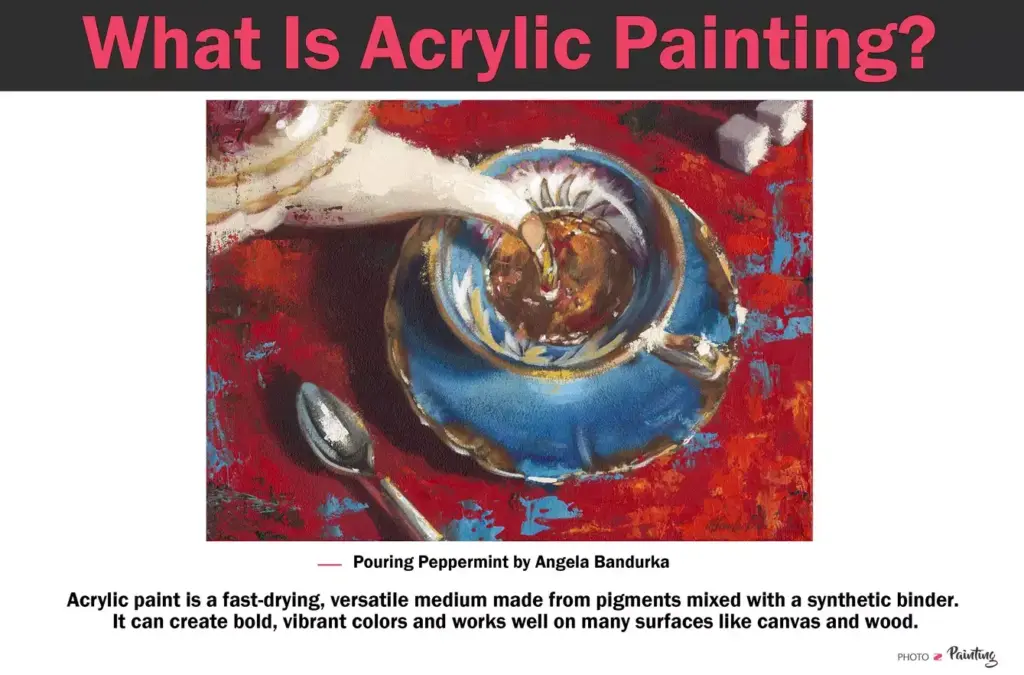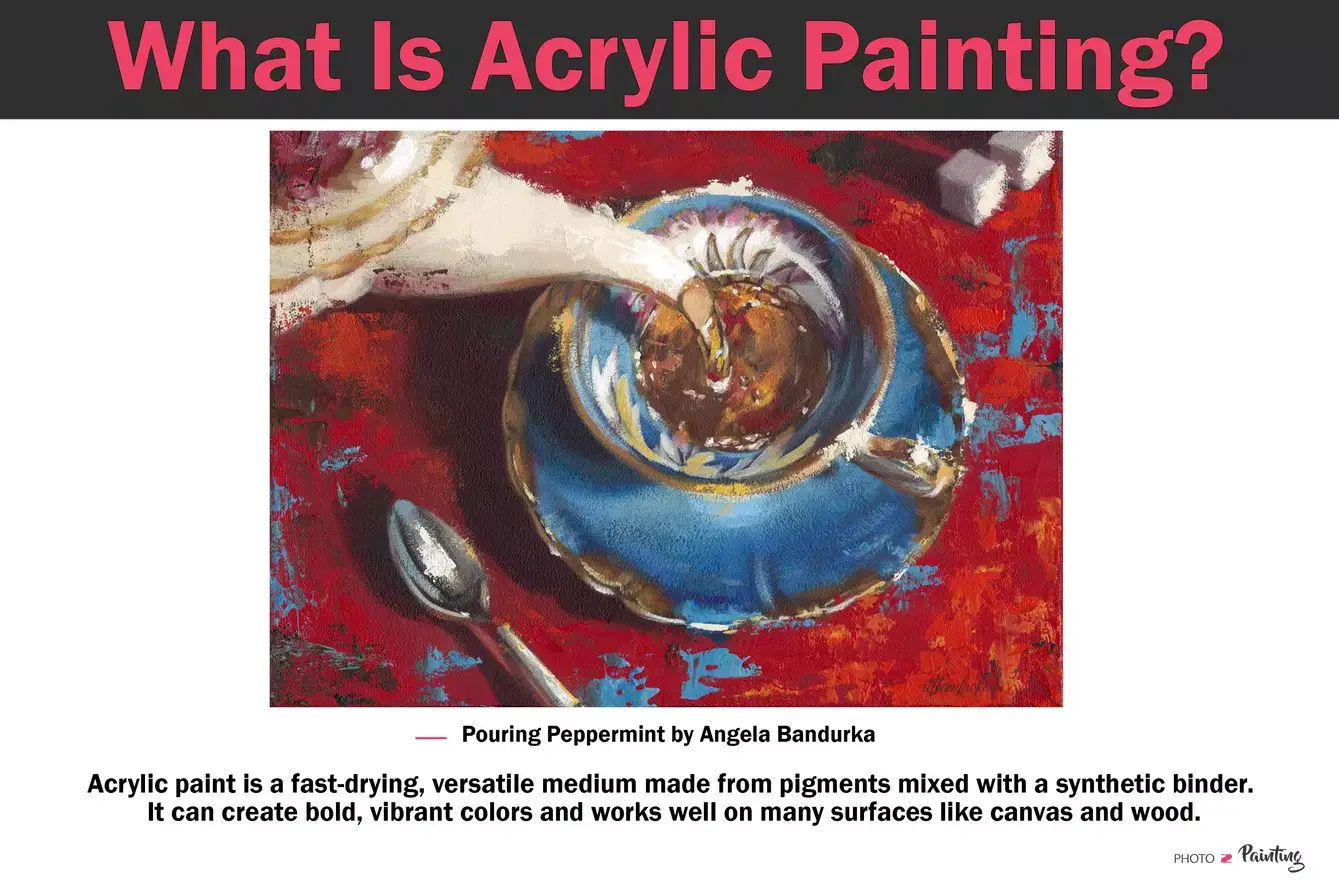
Watercolor vs. Acrylic: A Comprehensive Guide for Artists
Choosing between watercolor and acrylic paints can be a daunting task for both beginner and experienced artists. Both mediums offer unique qualities and are suited for different styles and techniques. This article aims to provide a comprehensive comparison of watercolor vs. acrylic, covering their properties, advantages, disadvantages, and ideal applications, ultimately helping you decide which medium best suits your artistic needs and goals. Understanding the nuances between watercolor and acrylic paints is crucial for achieving desired effects and mastering your craft. Let’s dive into the world of watercolor and acrylic paints and explore their distinct characteristics.
Understanding Watercolor Paints
Watercolor paints are known for their transparency and delicate washes. They consist of pigments suspended in a water-soluble binder, typically gum arabic. This composition allows the paint to be easily diluted with water, creating translucent layers and luminous effects. Watercolor painting is often associated with landscapes, botanical illustrations, and expressive sketches.
Properties of Watercolor
- Transparency: Watercolors are renowned for their transparency, allowing light to pass through the layers of paint and reflect off the paper.
- Re-wettable: Dried watercolor paint can be re-wetted and reactivated with water, making it easy to blend and rework areas.
- Lightfastness: The lightfastness of watercolor paints can vary depending on the pigment used. High-quality, artist-grade watercolors are typically more lightfast than student-grade paints.
- Fluidity: Watercolors are highly fluid and can be easily manipulated to create a variety of effects, from smooth washes to textured details.
Advantages of Watercolor
- Portability: Watercolor paints are lightweight and easy to transport, making them ideal for plein air painting and travel sketching.
- Easy Cleanup: Watercolors can be easily cleaned up with water and soap, minimizing mess and hassle.
- Luminous Effects: The transparency of watercolor allows for the creation of luminous and ethereal effects.
- Forgiving: Mistakes can often be corrected or blended away with water.
Disadvantages of Watercolor
- Difficult to Correct: While mistakes can be blended, completely correcting errors can be challenging due to the paint’s transparency.
- Limited Opacity: Watercolors lack opacity, making it difficult to create bold, opaque layers.
- Paper Sensitivity: Watercolor paper needs to be of high quality to prevent buckling and warping when wet.
- Fading: Some pigments are prone to fading over time if exposed to direct sunlight.
Exploring Acrylic Paints
Acrylic paints are synthetic paints consisting of pigments suspended in an acrylic polymer emulsion. They are known for their versatility, durability, and vibrant colors. Acrylic paints can be used on a variety of surfaces, including canvas, wood, fabric, and metal. They are popular among artists for their ability to create both opaque and transparent effects.
Properties of Acrylic
- Opacity: Acrylic paints offer excellent opacity, allowing for the creation of bold, vibrant layers.
- Fast Drying: Acrylic paints dry quickly, allowing artists to build up layers and work efficiently.
- Water-Resistance: Once dry, acrylic paints are water-resistant and permanent.
- Versatility: Acrylic paints can be used in a variety of techniques, from impasto to glazing.
Advantages of Acrylic
- Durability: Acrylic paints are highly durable and resistant to cracking and fading.
- Versatility: Acrylic paints can be used on a wide range of surfaces and in a variety of styles.
- Easy to Correct: Mistakes can be easily corrected by painting over them with opaque layers.
- Vibrant Colors: Acrylic paints offer a wide range of vibrant and intense colors.
Disadvantages of Acrylic
- Fast Drying Time: The fast drying time of acrylic paints can be challenging for some artists, especially when blending colors.
- Difficult Cleanup: Dried acrylic paint can be difficult to remove from brushes and other surfaces.
- Plastic Appearance: Acrylic paints can sometimes have a plastic or artificial appearance if not used carefully.
- Less Forgiving for Wet-on-Wet: The fast drying time makes wet-on-wet blending more difficult than with watercolors.
Watercolor vs. Acrylic: A Detailed Comparison
Now, let’s delve into a more detailed comparison of watercolor vs. acrylic across several key aspects:
Transparency and Opacity
This is one of the most significant differences between watercolor and acrylic. Watercolors are primarily transparent, while acrylics can be opaque. This difference impacts the layering techniques and the overall look of the finished artwork. With watercolor, the white of the paper shines through, creating luminosity. With acrylic, you can build up layers of opaque color to completely cover the surface beneath. [See also: Understanding Color Theory]
Drying Time
Acrylic paints dry much faster than watercolor paints. This can be an advantage for artists who want to work quickly and build up layers rapidly. However, it can also be a disadvantage for artists who prefer to blend colors on the canvas for extended periods. Watercolor‘s slower drying time allows for more blending and manipulation of the paint.
Blending Techniques
Watercolor lends itself well to wet-on-wet blending techniques, where colors are blended together while they are still wet. This creates soft, diffused effects. Acrylic paints can also be blended, but the fast drying time requires more deliberate and efficient blending techniques. You can use retarders to slow down the drying time of acrylics and extend the blending window.
Surface Compatibility
Acrylic paints are more versatile in terms of surface compatibility. They can be used on a wide range of surfaces, including canvas, wood, fabric, and metal. Watercolor paints are typically used on paper, although they can also be used on other absorbent surfaces. The type of paper used for watercolor painting is crucial for achieving optimal results. [See also: Best Surfaces for Painting]
Cost
The cost of watercolor and acrylic paints can vary depending on the brand, quality, and pigment used. Generally, student-grade watercolor paints are more affordable than artist-grade acrylics. However, high-quality artist-grade watercolors can be just as expensive, if not more so, than acrylics. Consider the long-term cost, including the need for mediums and varnishes, when comparing the overall cost of each medium.
Archival Quality
Both watercolor and acrylic paints can be archival quality, meaning they are resistant to fading and deterioration over time. However, the archival quality of the paint depends on the quality of the pigments used and the proper preparation of the surface. Look for paints that are labeled as lightfast or archival to ensure the longevity of your artwork. Acrylic paintings, due to their plastic nature, are generally more resistant to environmental factors after drying. [See also: Preserving Your Artwork]
Cleanup
Watercolor paints are easier to clean up than acrylic paints. Watercolors can be easily cleaned up with water and soap, while acrylic paints require more effort and may require the use of solvents. It’s important to clean your brushes thoroughly after using acrylic paints to prevent them from hardening and becoming unusable.
Choosing the Right Medium for You
Ultimately, the choice between watercolor and acrylic depends on your personal preferences, artistic style, and desired effects. Consider the following factors when making your decision:
- Your Preferred Style: If you prefer delicate, transparent washes and luminous effects, watercolor may be the better choice. If you prefer bold, opaque colors and textured surfaces, acrylic may be more suitable.
- Your Experience Level: Watercolor can be challenging for beginners due to its transparency and unforgiving nature. Acrylic paints are more forgiving and easier to correct, making them a good choice for beginners.
- Your Budget: Consider the cost of the paints, brushes, and other supplies when making your decision. Student-grade watercolors are often more affordable than artist-grade acrylics.
- Your Workspace: Consider the cleanup requirements of each medium. Watercolors are easier to clean up than acrylics.
Conclusion
In conclusion, both watercolor and acrylic paints offer unique qualities and are suited for different artistic styles and techniques. Watercolor paints are known for their transparency and delicate washes, while acrylic paints are known for their versatility, durability, and vibrant colors. By understanding the properties, advantages, and disadvantages of each medium, you can make an informed decision and choose the right paint for your artistic needs. Whether you choose watercolor or acrylic, the most important thing is to experiment, practice, and develop your own unique style. Don’t be afraid to try both mediums and see which one resonates with you the most. Happy painting!

